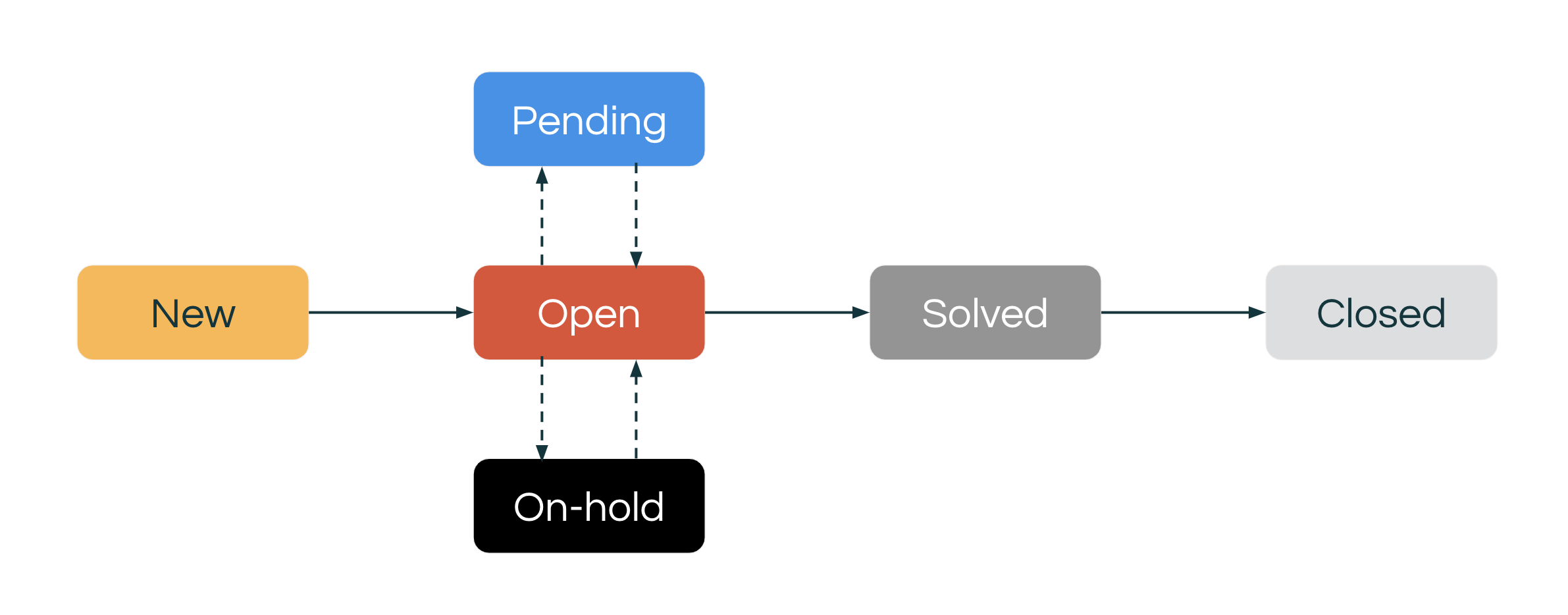Demand situations
A claim can go through six different phases during its lifetime. The status can be set and updated manually by an agent or automatically according to business rules ( Figure 5 ).

Figure 5. Demand situations
The six demand cases are defined as follows:
- New: An agent has not yet received the request. Once the agent has updated the request from New to Open, it cannot be moved back to New.
- Open: The ticket is assigned to an agent who works to resolve the issue.
- Pending: The agent needs additional information from the requester or customer to continue resolving the ticket.
- Suspended: The agent is waiting for additional information or a solution from a third party.
- Solved Problem solved. A resolved request is reopened when the requester responds (if necessary).
- Closed: The request is closed by the system and cannot be reopened. A closed request can only be viewed and is not edited in any way. As a general rule, requests are closed without response thirty days after they are in the resolved status.
Request workflow example
Let’s look at an example of how the status of a request changes over time ( Figure 6 ). Your customer writes an email and says “I need help”. This email arrives as a request and is automatically labeled New.
You go in as a representative and you find this demand within Grispi. First, assign the request to yourself and inform the customer that you are working on it. The customer has not provided enough information and you may need other information to resolve the request. From the public reply field, you can send an email to the customer and send the request as Pending. The customer can send you a request again. The ticket will return to Open status and you will see it again on your dashboard when it is your turn to work on the ticket. You provide the customer with the last steps to follow.
You then send the request as Resolved and that can be the end of the journey. Closed status is reached 30 days after the request is resolved by the system.

Figure 6. Request workflow example
